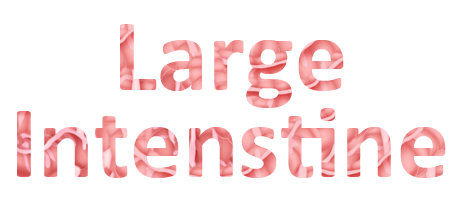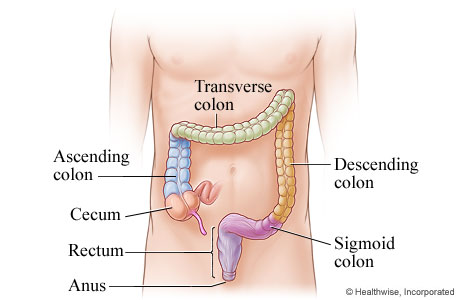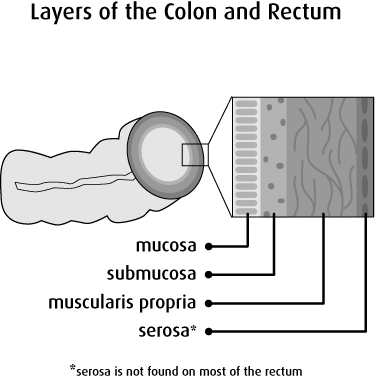
The last place to extract anything useful for our body, from the food we eat, is the Large Intestine. Once the food matter passes the Large Intestine, it becomes excreta. There’s more to this organ than it simply being the last part of the digestive tract. So let’s find out more about the Large Intestine.
Large Intestine is one of the final portions of the digestive system. It is the undigested food that enters from small intestine into the Large Intestine. It ensures that it absorbs any water left in the food that is left undigested, and later passes unused waste from the body. This results in the food waste products to harden and form faeces, which are then excreted.
Large Intestine consists of cecum, colon and rectum which transfers the waste matters to the anus to defecate. Inclusive of all its parts, the Large Intestine has a length of 1.5 metres. The cecum is the first part of Large Intestine where the indigested food from small intestine passes through. It looks like a small pouch.
The cecum is connected to the colon that carries the undigested food from cecum and is divided into four parts:
Ascending colon: It extends upward from cecum to the right lower end of liver carrying the undigested food from cecum.
Transverse colon: From the ascending colon, the colon turns to the right under our stomach. This is the transverse colon.
Descending colon: From under the spleen at the left side of our abdomen starts the descending colon that moves down the abdomen.
Sigmoid colon: This is the last part of the colon and is curvy that gets along with the coils of small intestine. From the colon the waste matter is emptied to the rectum which is the last part of the Large Intestine and is 2.5 cms to 4 cms long. The rectum then empties the wastage from our body through anus.

The cecum has a layer of mucous membrane in its inner wall, which helps them to absorb water and salt. Underneath this, there is also a deep layer of muscle tissue. The cecum is separated from the small intestine by a muscle valve known as ileocecal (also called Bauhin valve). This valve maintains the speed of passage of food from small intestine to cecum and also prevents the reverse flow. On the other hand, colon and rectum are made up of different layers of tissues. The innermost layer is mucosa which again has three layers – an innermost epithelium lining, a layer of connective tissue and the outermost muscle layer. Then there is the submucosa which has connective tissues, glands, blood vessels, lymphatic vessels and nerves. It is then layered by a muscular layer called muscularis propia. The outermost lining of the colon is serosa but it is not available in rectum.

The main function of the Large Intestine is to absorb water and nutrients from the indigestible food matter which is transferred from the small intestine and excrete the waste matter from the body. The food matter that passes down from the small intestine is in liquid form and the bacteria, bowel flora, present in the colon breaks them down into smaller parts which let the epithelium to absorb water and nutrients from the food. Then the remaining waste matters are converted into semi-solid matters i.e. stool. The undigested food is carried across the colon with the help of peristalsis, the contraction and relaxation of muscle. This phenomenon along with the mucus produced by the epithelium at the end of the colon helps the stool to pass on to the rectum. The rectum holds the stool until it is full and then after a signal from the brain, the rectum empties the stool through the anus.
Some dysfunction of Large Intestine leads to a number of medical problems in our body. The major ones are:
Diarrhea: It is the condition when the frequency of lose faeces increased due to less absorption of water by the colon.
Constipation: When the indigested food moves slowly along the colon, the colon tends to absorb excess water from the stool making it harder and its disposal becomes infrequent causing constipation.
Gardner’s Syndrome: It occurs in the colon when there is multiple growth of some tissues known as polyps which might turn into cancer.
Inflammatory Bowel Disease (IBD): It is an inflammatory condition of the digestive track. There are two such major conditions, namely, Crohn’s disease and ulcerative colitis. Crohn’s disease can occur anywhere in the digestive system but happens majorly in all of the Large Intestine. On the other hand, ulcerative colitis is restricted only to the colon and the rectum.
G Kowledge of | 0 Comments >>
0 Comments
Leave Comment
Your email address will not be published. Required fields are marked.